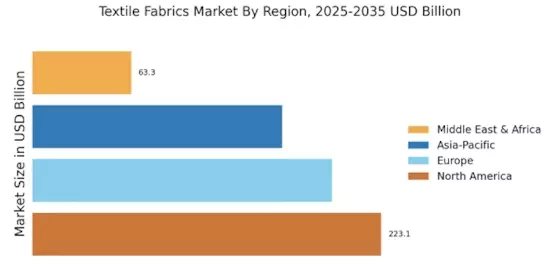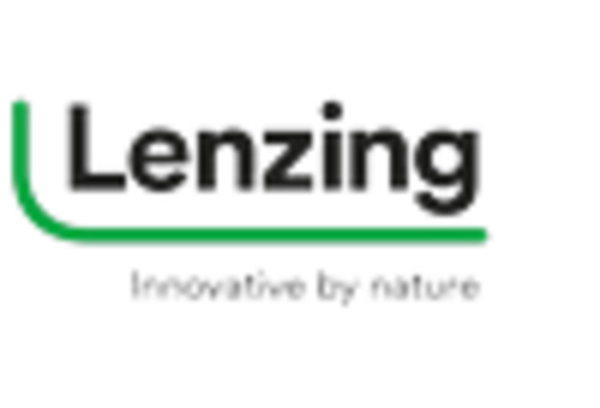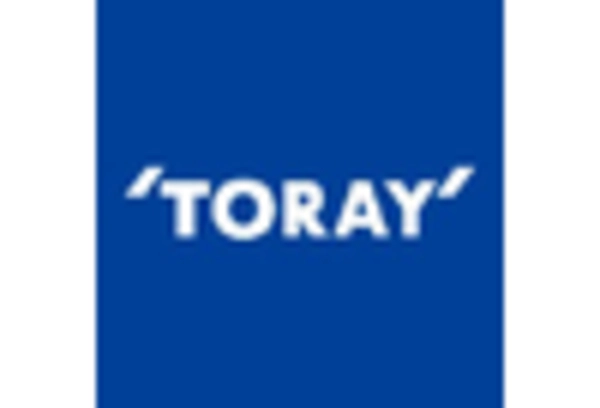The Textile Fabrics Market is currently characterized by a dynamic competitive landscape, driven by innovation, sustainability, and technological advancements. Key players such as Berkshire Hathaway (US), Toray Industries (JP), and DuPont (US) are strategically positioning themselves to leverage these growth drivers. Berkshire Hathaway (US) has focused on diversifying its portfolio through acquisitions, enhancing its market presence in high-performance textiles. Meanwhile, Toray Industries (JP) emphasizes innovation in sustainable materials, particularly in the development of bio-based fibers, which aligns with the increasing consumer demand for eco-friendly products. DuPont (US) is also making strides in this area, concentrating on advanced materials that cater to specific industrial applications, thereby shaping a competitive environment that prioritizes quality and sustainability.
The business tactics employed by these companies reflect a concerted effort to optimize supply chains and localize manufacturing. The Textile Fabrics Market appears moderately fragmented, with a mix of large multinational corporations and smaller niche players. This structure allows for a diverse range of products and innovations, as key players collaborate and compete to enhance their offerings. The collective influence of these major companies fosters a competitive atmosphere where agility and responsiveness to market trends are paramount.
In August 2025, Toray Industries (JP) announced a partnership with a leading fashion brand to develop a new line of sustainable textiles made from recycled materials. This strategic move not only reinforces Toray's commitment to sustainability but also positions the company as a frontrunner in the eco-conscious segment of the market. By aligning with a prominent brand, Toray is likely to enhance its visibility and appeal to environmentally aware consumers, thereby driving sales and market share.
In September 2025, DuPont (US) unveiled a new range of high-performance fabrics designed for the automotive industry, focusing on durability and lightweight properties. This launch signifies DuPont's strategic intent to penetrate the automotive sector, which is increasingly seeking advanced materials to improve vehicle efficiency. The introduction of these fabrics could potentially open new revenue streams for DuPont, while also addressing the industry's demand for innovative solutions.
In October 2025, Berkshire Hathaway (US) completed the acquisition of a textile manufacturing company specializing in smart fabrics. This acquisition is indicative of Berkshire's strategy to diversify its offerings and tap into the growing market for smart textiles, which integrate technology into fabric design. By enhancing its capabilities in this area, Berkshire Hathaway is likely to strengthen its competitive position and appeal to tech-savvy consumers.
As of October 2025, the competitive trends in the Textile Fabrics Market are increasingly defined by digitalization, sustainability, and the integration of artificial intelligence. Strategic alliances among companies are shaping the landscape, enabling them to pool resources and expertise to innovate more effectively. The shift from price-based competition to a focus on innovation, technology, and supply chain reliability is becoming evident. Companies that can differentiate themselves through unique offerings and sustainable practices are likely to thrive in this evolving market.


















Leave a Comment